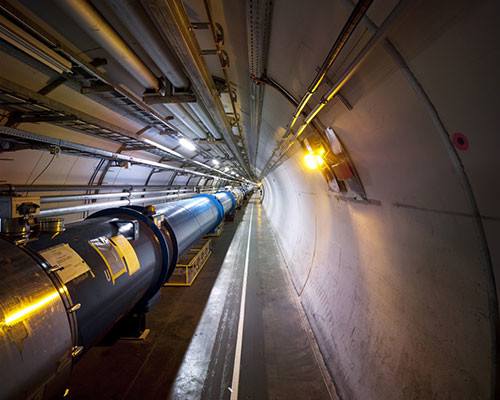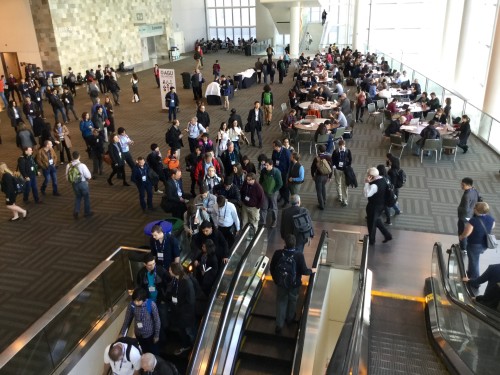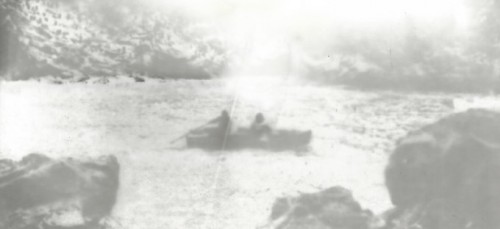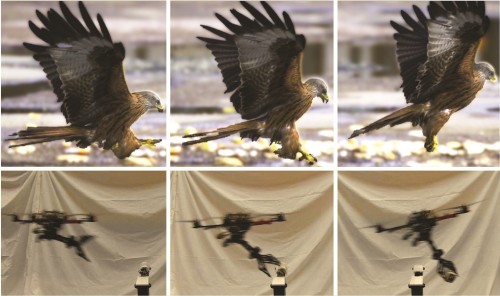Tag archives: climate change
Climate change and chaos, the many faces of physics, spider-silk superlenses and more
By Tushna Commissariat
In case you have ever wondered why so many theoretical physicists study climate change, physicist Tim Palmer from the University of Oxford in the UK has a simple answer: “because climate change is a problem in theoretical physics”. Indeed, Palmer, who won the Institute of Physics’ 2014 Dirac medal, studies the predictability and dynamics of weather and climate, in the hopes of developing accurate predictions of long-term climate change. The answer, according to Palmer, lies at the intersection between chaos theory and inexact computing – which requires us to stop thinking of computers as deterministic calculating machines and to instead “embrace inexactness” in computing. Palmer talked about all this and more in the latest public lecture from the Perimeter Institute in Canada – you can watch his full talk above.
When someone says the word “physicist”, what image or persona comes to mind? That is the question the Institute of Physics (which publishes Physics World) was hoping to answer with its recent member survey based on diversity, titled “What Does a Physicist Look Like?” The Institute’s main aim with this diversity survey, which about 13% of its members responded to, was “to understand the profile of our members and gain some insights into who they are – diverse people with different ages, ethnicities, beliefs and much more”. You can read its entire results here.
Physics saves humanity, the large rainfall collider and other environmental highlights on Earth Day

Gravity’s pull: could the LHC be used as a giant rain gauge? (Courtesy: CERN)
By James Dacey and Hamish Johnston
Today is Earth Day, so let’s temporarily rename this regular Red Folder column as the Green Folder. Either way, today we’re going to focus on the Earth and environmental issues. The official website of Earth Day – an initiative now in its 46th year – has details about the various initiatives and events taking place around the world today.
First, let’s pay tribute to a physicist whose work had a profound influence on the climate and energy debate in the UK and beyond. Sir David Mackay died on 14 April aged 48 following a battle with cancer. Mackay is remembered among other things for his pragmatic approach to energy and his 2008 book Sustainable Energy: Without the Hot Air (free access) was hailed for its rigour and refreshing absence of rhetoric. Mackay’s writings attracted the interest of the British government who appointed him as chief scientific adviser to the Department of Energy and Climate Change in 2009, a post he held for five years. Ever prolific, Mackay was blogging about his experiences right up until two days before his death.
Are reticent climate researchers ‘failing humanity’?

By James Dacey in San Francisco
Droves of delegates poured into the Moscone Center in San Francisco today for day one of AGU Fall 2015 – the largest Earth and space-science meeting in the world, with a whopping 24,000 delegates expected over the week. Having arrived from the UK on Saturday night, the jet-lag has kicked in with a vengeance today, so a couple of the conference coffees were definitely in order this morning. I’m just taking a break now after an interesting session about communicating climate change, and whether those researchers who don’t engage in the public debate are “failing humanity”.
The room was packed to the rafters, no doubt down to the profile of the speakers. First up was James Hansen, the former NASA scientist who has been outspoken in his criticism of the recent COP21 climate discussions, or at least the lack of concrete proposals to cut carbon emissions. Hansen restated his beef with the deal and argued that the only workable solution is for authorities to collect a carbon fee at source, such as charging domestic mines for the weight of carbon they sell. This, he believes, is the most effective way to make renewable energy and low-carbon options more viable. Not one to pull his punches, Hansen described US Energy Secretary Ernest Moniz’s idea that China will be able to curb much of its carbon missions using carbon capture and storage (CSS) technologies as “pure unadulterated bullshit”.
Whisky in space, methane-capturing coffee, conference disasters and more
By Hamish Johnston
Fancy a wee dram while you are orbiting the Earth? With the growing interest in space tourism, travellers could soon be enjoying a sip or two of whisky in space. To make such tipples as enjoyable as possible, the Scotch whisky maker Ballantine’s has developed a special “space glass” that works in the free-fall conditions of Earth orbit. The firm is also developing a special blend of whisky to be enjoyed in space.
Created by Ballantine’s master whisky blender Sandy Hyslop and James Parr from the Open Space Agency, the new glass was filled with Scotch and tested in free-fall at the ZARM drop tower in Bremen, Germany. You can find out more about how one’s palate changes in space and the challenges facing the glass designers in the above video. And if you want to know if the glass passed the free-fall test, there is a second video called “Space Glass Project: the microgravity test”.
Physics of haiku, blizzards and Thor’s hammer
By Hamish Johnston
Students at Camden School for Girls in London have published a lovely book of haiku about science. Called Sciku: The Wonder of Science – in Haiku!, the volume contains 400 poems and is on sale with proceeds going to upgrading the science labs at the school. The students are not the only ones at the school with literary ambitions. Their science teacher Simon Flynn has also written a book called The Science Magpie, which we reviewed two years ago.
Below is a little taste of what is inside the book of haiku and you can also watch several of the students reading their poems in the video above.
Gravity:
An attractive force
Between all objects with mass
Just like you and me
A visit to an island called Nuuk

Anaïs Tondeur in collaboration with Jean-Marc Chomaz, Paul Syrillin, 2014, shadowgram, 11 × 24 cm. Image courtesy of the artist and GV Art gallery.
By Margaret Harris
The story of Nuuk began in the early 18th century when a French naval officer landed on a barren, ice-covered island and noted its coordinates in his logbook. The island, he reported, was volcanic in nature, but little else was known about it; indeed, later visitors to its supposed location found no sign of land. Rediscovered in the 20th century, Nuuk was soon visited by a series of scientific expeditions, one of which noted that the island’s surface area was shrinking. An observation station was set up on a prominent headland, but in 2012, it abruptly ceased transmitting; satellite images later revealed that Nuuk had vanished entirely beneath the ocean surface. Coincidentally, the final signal from Nuuk arrived just as the 34th International Geological Congress was meeting in Australia to discuss the emergence of a new, human-influenced geological age: the Anthropocene.
Nuuk and the various forces that contributed to its demise are the subject of a fascinating exhibition currently on show (until 29 November) at the GV Art gallery in London. Lost in Fathoms is a collaboration between an artist, Anaïs Tondeur, and a physicist, Jean-Marc Chomaz, who specializes in fluid dynamics. To develop her ideas about Nuuk, Tondeur spent a year in residence at Chomaz’s Laboratoire d’Hydrodynamique at the Ecole Polytechnique in France, while other parts of the exhibition grew out of a summer school in Cambridge, UK, that focused on fluid dynamics, sustainability and the environment.
A huge cycle in Sheffield, $30,000 for falsifying global warming and another physicist goes into advertising

Celebrating the Tour de France and Hans Krebs in Sheffield. (Courtesy: University of Sheffield)
By Hamish Johnston
Sports fans in the UK are spoiled for choice this weekend, with the Wimbledon finals in London and the kick-off of the Tour de France in Leeds. This is only the second time that the famous bicycle race has started in the UK and to celebrate, the University of Sheffield has created a huge image of a bicycle in a field near to the route. But as well as celebrating the passing cyclists, the image honours a very different cycle that makes the race and indeed much of life on Earth possible.
A new Longitude Prize, global cooling in the 1970s, inspirational creatures and more

A red kite and a drone swoop down on their prey. (Courtesy: Vijay Kumar)
By Hamish Johnston
A bird of prey swoops out of the sky, grabs its victim from the ground and flies off into the distance. It’s what a bird does instinctively, but how could we get a drone aircraft to do the same thing? That’s the subject of one of the papers in a special issue of the journal Bioinspiration & Biomimetics that focuses on “Bioinspired flight control”.
The above sequence of images is from a paper entitled “Toward autonomous avian-inspired grasping for micro aerial vehicles” by Vijay Kumar and colleagues at the University of Pennsylvania. The special issue also includes work on aircraft inspired by flying snakes, flocking birds and incredibly stable moths.
View all posts by this author | View this author's profile